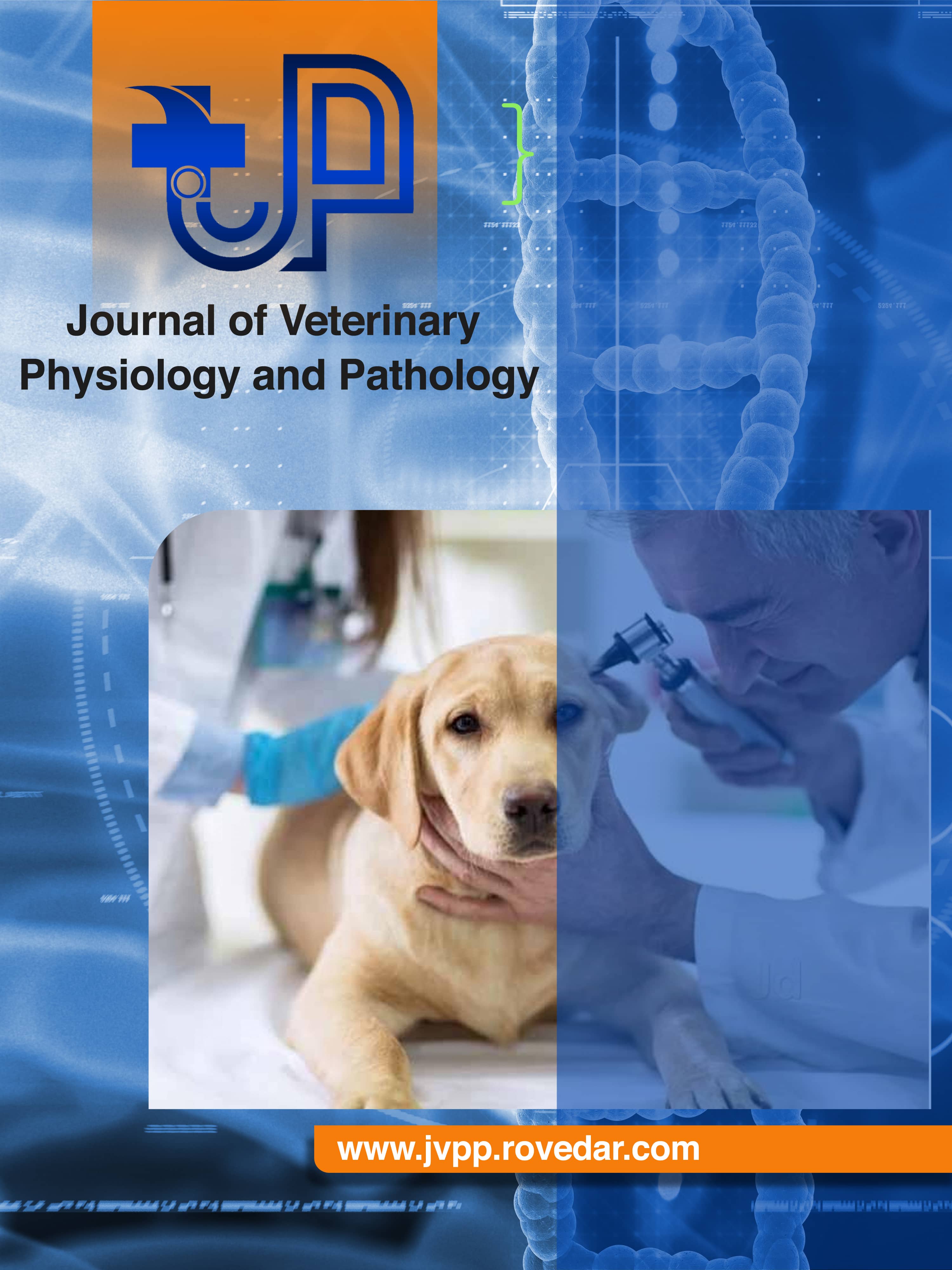Salmonellosis in Young Calves: A Perplexing Problem beyond Diarrhea
Main Article Content
Abstract
Introduction: Salmonellosis is a well-known infectious disease invading both adult and young cattle, commonly characterized by severe diarrhea and septicemia in calves as well as fever, dysentery, abortion, increased salivation, and decreased milk production in adults. Rapid outbreaks and heavy mortality rates have turned Salmonella spp. into a violent organism from farmers’ and experts’ perspectives. The objective of this article was to pragmatically underline different aspects of Salmonellosis infections in young calves with emphasis on novel clinical and post-mortem signs.
Case report: Two calves aged 70–80-day old were primarily diagnosed with respiratory disease, high body temperature (> 40°C), and hyperpnea in the Behroozi Dairy Farm, Tehran, Iran. Calves were treated with anti-inflammatory drugs and antibiotics (amikacin and penicillin) immediately, but they died the next day. After that, the number of ill calves increased dramatically and 120 calves were discovered with the same signs, including persistent high body temperature, hyperpnea, and recumbency. Early diagnosis and proper treatment and nursing were key factors in reducing the recovery time and mortality rate.
Conclusion: In some salmonellosis cases, treatment could become complicated due to developing resistance to various antibiotics. Calves born in filthy calving pens and those with depressed immunity are susceptible to salmonellosis. Therefore, complying with sanitary practices as well as precise nutrition programs for pre-weaning and weaning calves could provide a preventive tool to reduce the risk of Salmonellosis outbreak.
Article Details

This work is licensed under a Creative Commons Attribution 4.0 International License.
References
Holschbach CL, and Peek SF. Salmonella in dairy cattle. Vet Clin
North Am Food Anim Pract. 2018; 34(1): 133-154. DOI: https://doi.org/10.1016/j.cvfa.2017.10.005
Mohler VL, Izzo MM, and House JK. Salmonella in calves. Vet Clin North Am Food Anim Pract. 2009; 25(1): 37-54. DOI: https://doi.org/10.1016/j.cvfa.2008.10.009
Salmonellosis: Background, management and control. College
of veterinary medicine, Ithaca, New York. Available at: https://www.vet.cornell.edu/animal-health-diagnostic-center/programs/nyschap/modules-documents/salmonellosis-background-management-and-control
Nikkhah A, Alimirzaei A, Kazemi H, and Mottaghian P. Theileriosis in commercial Holstein calves and heifers. Biomed J Sci Technic Res. 2022; 46: 37002-37005. DOI: https://doi.org/10.26717/BJSTR.2022.46.007288
Anderson RJ, House JK, Smith BP, Kinde H, Walker RL, Vende Streeg BJ, et al. Epidemiologic and biological characteristics of salmonellosis in three dairy herds. J Am Vet Med Assoc. 2001; 219: 310-322. DOI: https://doi.org/10.2460/javma.2001.219.310
Jepson MA, and Clark MA. The role of M-cells in salmonella infection. Microbes Infect. 2001; 3(14-15): 1183-1190. DOI: https://doi.org/10.1016/s1286-4579(01)01478-2
Wray C, and Davies R. Salmonella infections in cattle, In: Wray C, Wray W, editors. Salmonella in domestic animals. New York: CABI Publishing; 2000. p. 160-190. DOI: https://doi.org/10.1079/9780851992617.0000
Gelberg HB, McGavin MD, Carlton WW, and Zachary JF. Alimentary systm1. In: McGavin MD, Carlton WW, Zachary JF, editors. Thomsons’ special veterinary pathology. 3rd ed. St. Louis (MO): Mosby, Inc; 2001. p. 1-79.
Ramos CP, Vespasiano LC, Melo IO, avier RGC, Leal CAG, Filho FJF, et al. Outbreak of multidrug resistant salmonella typhimurium in calves at a veterinary hospital in Brazil. Cienc Rural, Santa Maria. 2019; 49(02): e20180788. DOI: https://doi.org/10.1590/0103-8478cr20180788
Meale SJ, Chaucheyras-Durand F, Berends H, Guan LL, and Steele MA. From pre- to postweaning: Transformation of the young calf’s gastrointestinal tract. J Dairy Sci. 2017; 100: 5984-5995. DOI: https://doi.org/10.3168/jds.2016-12474
Nikkhah A, and Alimirzaei M. Preventing diarrhea to reduce calf morbidity and mortality: A pragmatic outlook. Int J Biomed Res. 2022; 2(3): 1-3.
Nikkhah A, and Alimirzaei M. Individual vs. group housing of dairy calves: An arbitrary or provisional rule?. World J Agric Soil Sci. 2022; 7: 1-2. DOI: https://doi.org/10.33552/WJASS.2022.07.000668
Nikkhah A, and Alimirzaei M. bedding management for young calves: Health, welfare and growth perspectives. J Biomed Sci. 2022; 4(1): 1561-1562. Available at: https://biomedscis.com/fulltext/bedding-management-for-young-calves-health-welfare-and-growth-perspectives.ID.000396.php





